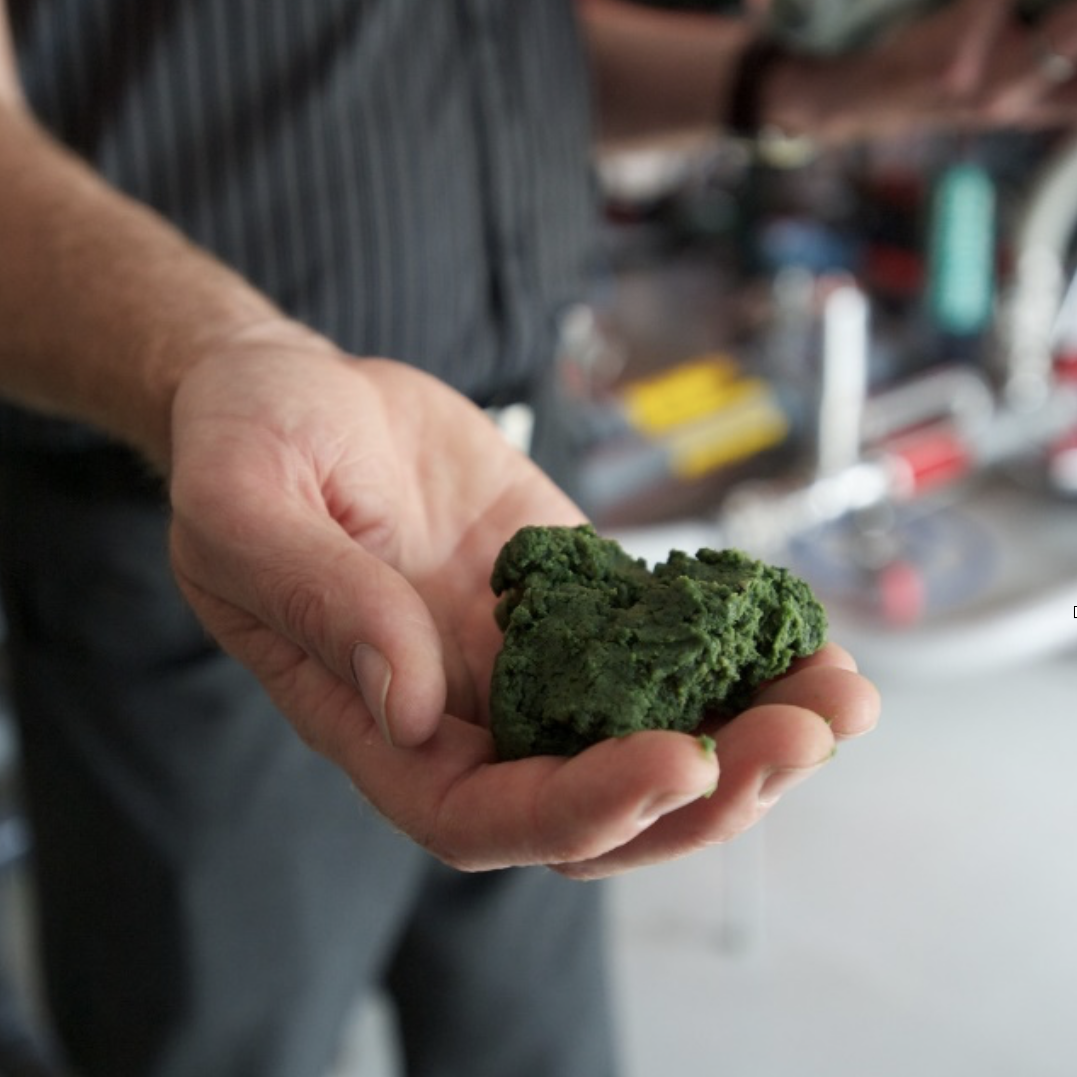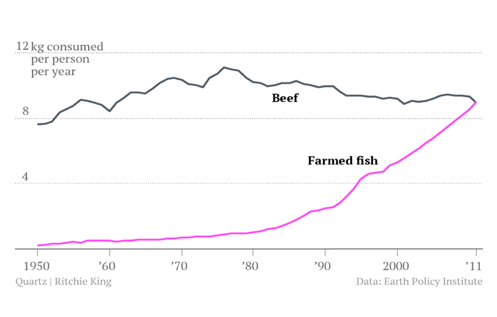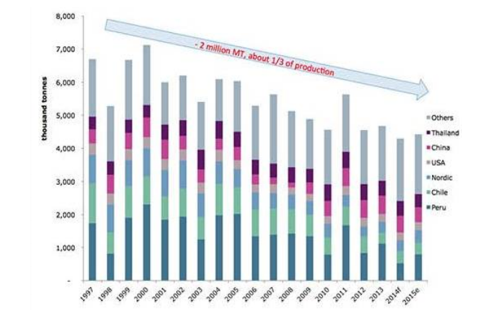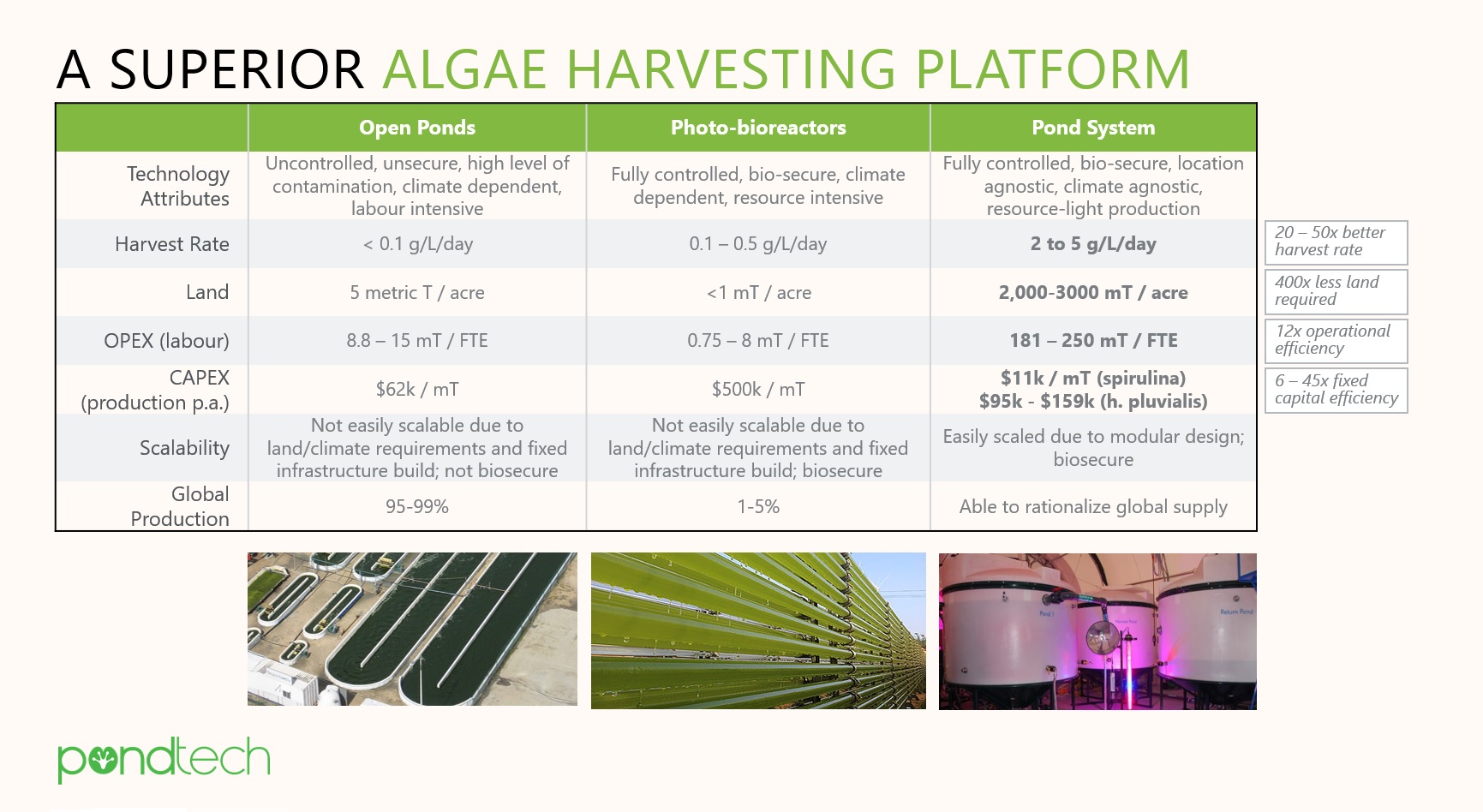Aquaculture
Algae contain all the key nutrients to supply a sustainable aquaculture industry

Microalgae like Spirulina and Chlorella are the true source of most nutrients on Earth, forming the base of the food pyramid in oceans, lakes, and rivers

Algae is a far superior feed ingredient compared to corn & soy as it can contain up to 70% protein and is rich in omega fatty acids and antioxidants
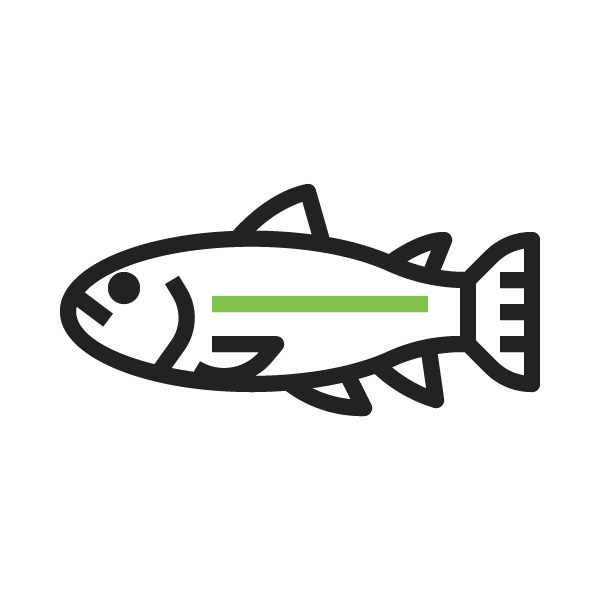
Algae production at scale can alleviate widespread overfishing for anchovies and other feeder fish used in industrial fish farming
The Aquaculture Market

Market Size
$108 billion USD in 2017
(total aqua feed market)

Annual Growth Rate
10%
(total aqua feed market)

Price Per Tonne
$1,400-$1,800 USD
(bulk fish meal)

Regulatory
New bans on some synthetic additives like ethoxyquin in the EU & Chile driving demand for natural ingredients and antioxidants derived from algae
Pond & Aquaculture
- Fish and crustaceans have evolved to digest algae and algae-eating organisms, so feeding them algae-based feed can be beneficial to the health and growth rates of farmed fish vis a vis corn or soy-based feed
Pond has successfully grown multiple strains of algae for use in fish feed
1. Pond-grown Chlorella strain contains >55% protein and is rich in α-Linolenic acid (ALA), Lutein, and Astaxanthin.
2.
3. Pond-grown Haematococcus algae can contain up to 5% Astaxanthin which can serve as a natural preservative of lipid-based fish feed.
Pond has demonstrated growth rates for Spirulina and Chlorella that surpass other technologies by 20-50x- Pond’s modular design allows us to build and scale a facility at any industrial site providing supply security for fishmeal producers who currently rely on volatile and declining harvests wild fish stocks
Algae addresses Food Security & Ocean Health
- As of 2011, people consume more farmed fish than beef
- Demand for meat-based protein is growing as tens of millions enter the middle-class in growing economies like China or India
- At the same time, overfishing of feeder fish like anchovies and sardines has reduced global fishmeal supply by 33% in the last 2 decades
- Upon mass-adoption, Pond algae plants could alleviate some pressure on ocean ecosystems and provide a stable, reliable source of high-quality protein and nutrients
- Algae has also been found to increase milk production in cows and could be used as a substitute during climate change-induced feed shortages
- Fish2.0 provides a great investor overview of innovation in fish feed and highlights algae as a key building block of sustainable aquaculture
Pond Algae is a Superior, Sustainable Feed
- Algae
contains up to 2x and 8x more protein than soy and corn, respectively. - Algae protein is more readily absorbed into animal and human bodies while soy, the main fish meal substitute, is deficient in several essential amino acids (especially methionine and lysine).
- Both corn and soy require vast amounts of land, water, and energy for fertilizers and farm equipment.
- The main challenge to date has been growing cost-competitive algae at scale, without the need for vast amounts of land and water. Pond’s technology addresses these challenges. Learn more on our tech page.
- A Pond system powered by a new natural gas power plant can produce carbon-neutral protein, requires near-zero water for operations, and 1000x less land compared to soy or corn. The Pond plant could even reduce carbon in the atmosphere if it was powered renewable energy!
| T GHG EMITTED PER T FEED | 0.58 |
| PROTEIN CONTENT | 35% |
| T GHG PER T PROTEIN PRODUCED | 1.657 |
| TONNES OF PROTEIN PER ACRE | 4.1 |
| ASSUMPTIONS |
– 1 tonne of soy (from a weighted average of Canadian soy crops) produces 580 kg CO2eq -52.5 bu yield per acre -27 kg per bu soy |
| T GHG EMITTED PER T FEED | 0.30 |
| PROTEIN CONTENT | 9% |
| T GHG PER T PROTEIN PRODUCED | 3.311 |
| TONNES OF PROTEIN PER ACRE | 0.2 |
| ASSUMPTIONS | – 1 tonne of corn grain (for animal feed from Ontario corn) produces 243 to 353 kg CO2eq – 5,845 kg corn per hectare |
| T GHG EMITTED PER T FEED | -0.02 |
| PROTEIN CONTENT | 65% (2x compared to soy; 7x compared to corn) |
| T GHG PER T PROTEIN PRODUCED | -0.034 (carbon neutral) |
| TONNES OF PROTEIN PER ACRE | 4340 (>1000x land productivity) |
| ASSUMPTIONS | – 4,500,000 L unit – Growth rate: 4 g/L/day – Energy intensity: 0.6 W/L – Power – 4,400 t Spirulina produced – 1.82 t CO2 abated per t algae |
| T GHG EMITTED PER T FEED | -1.77 |
| PROTEIN CONTENT | 65% |
| T GHG PER T PROTEIN PRODUCED | -2.725 (sequesters carbon) |
| TONNES OF PROTEIN PER ACRE | 4340 |
| ASSUMPTIONS |
– Power – All other assumptions same as Pond Algae |

